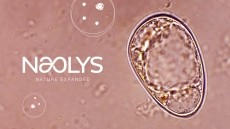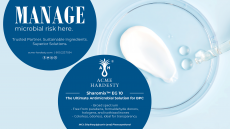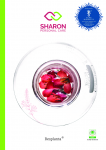Next generation Botox approved by FDA
from Allergan, the makers of Botox, has been given the all-clear by
the FDA.
Juvederm, a hyaluronic acid dermal filler, claims to provide smoother, longer-lasting results than competitive products.
According to Allergan, its new gel family of products can deliver sustained results for up to six months longer than other products, due to its higher concentrations of non-animal and cross-linked hyaluronic acid.
Occurring naturally in the body, hyaluronic acid is a natural complex sugar found in all living organisms and creates volume and elasticity in the skin.
With the FDA approval, Juvederm is now set to join Botox as an alternative semi-permanent anti-wrinkle treatment, tapping into a market that is fast-growing in both North America and Europe. In 2004 more than 7.5 million non-invasive procedures were performed in the United States, up 36 per cent from 2000, according to the American Society of Plastic Surgeons.
Allergan claims its new formulation is natural, biodegradable and currently the only approved hyaluronic acid dermal filler that has demonstrated its safety and effectiveness in patients of all skin types and colors.
It also claims to be the only hyaluronic acid dermal filler developed using a proprietary, technologically advanced manufacturing process that results in a malleable smooth gel that flows easily into the skin, creating a smooth, natural look and feel. According to the company, all other currently approved hyaluronic acid dermal fillers utilize a gel particle suspension formulation.
"It is very exciting to have a new facial rejuvenation tool with the unique qualities of Juvederm that we can now offer to our patients. Our clinical investigation found Juvederm to be a smooth-flowing injection that provides our patients with a natural appearing result. The new formulation of hyaluronic acid offers physicians a high level of control for facial contouring," said Gary Monheit, Juvederm clinical investigator.
The FDA approved three different formulations for Juvederm. These are Juvederm 24HV, for more versatility in contouring and volumizing of facial wrinkles and folds; Juvederm 30HV, for volumizing and correction of deeper folds and wrinkles; and Juvederm 30, for subtle correction of facial wrinkles and folds.
Juvederm, which must be administered by a qualified health care provider, adds volume to facial wrinkles. In contrast, Botox relaxes the dominant frown muscles between the eyebrows, allowing the two vertical lines between the brows to temporarily diminish in appearance.
The FDA's approval of Juvederm was based on data from a double-blind, randomized and controlled clinical trial. A total of 439 subjects were followed for six months after injection with one of three Juvederm formulations in one nasolabial fold, and Zyplast, a bovine-based collagen, in the other.
Allergan said the tests revealed that Juvederm was found to provide a more persistent wrinkle correction than Zyplast over the 6-month course of the study, with up to 90 percent of subjects maintaining at least a 1-grade improvement in nasolabial fold correction with Juvederm compared to 36-45 percent with Zyplast.
At the conclusion of the study, up to 88 percent of subjects expressed a preference for Juvederm while only 5-12 percent expressed a preference for Zyplast.
The company said it is currently finalizing the presentation of the products, and is due to announce availability dates later this year.












